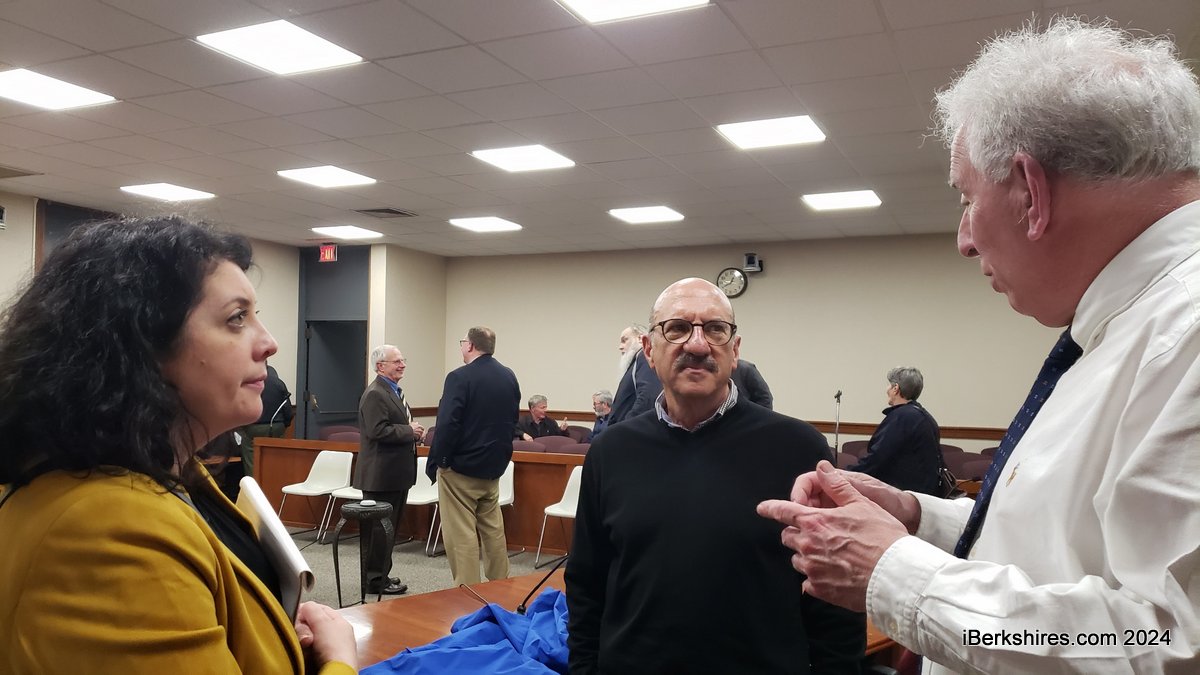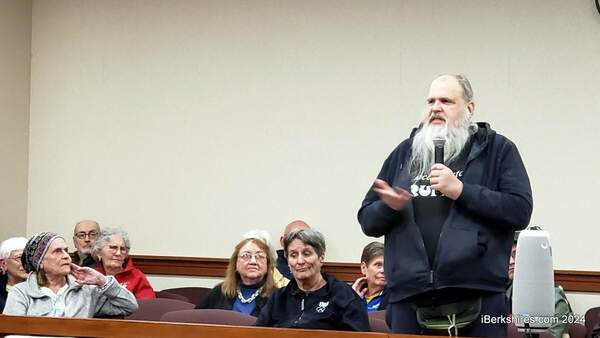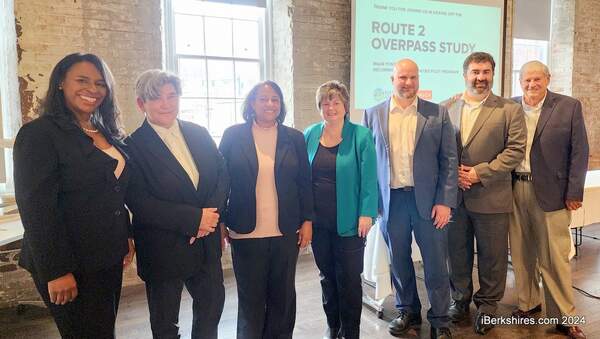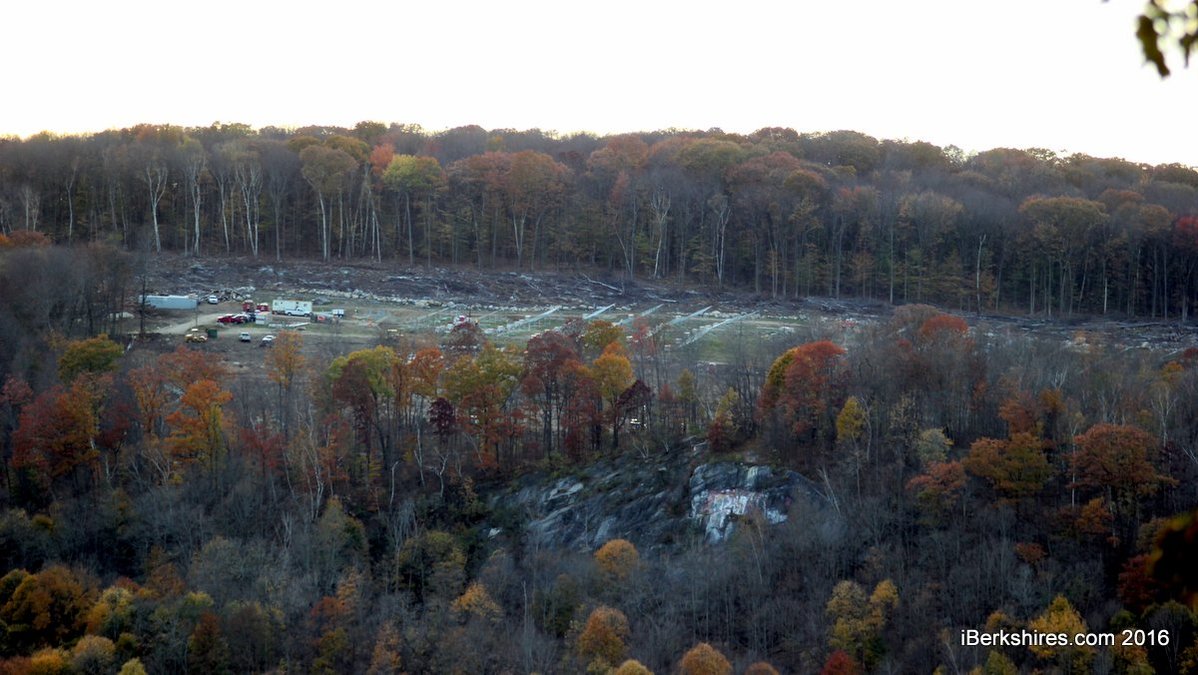
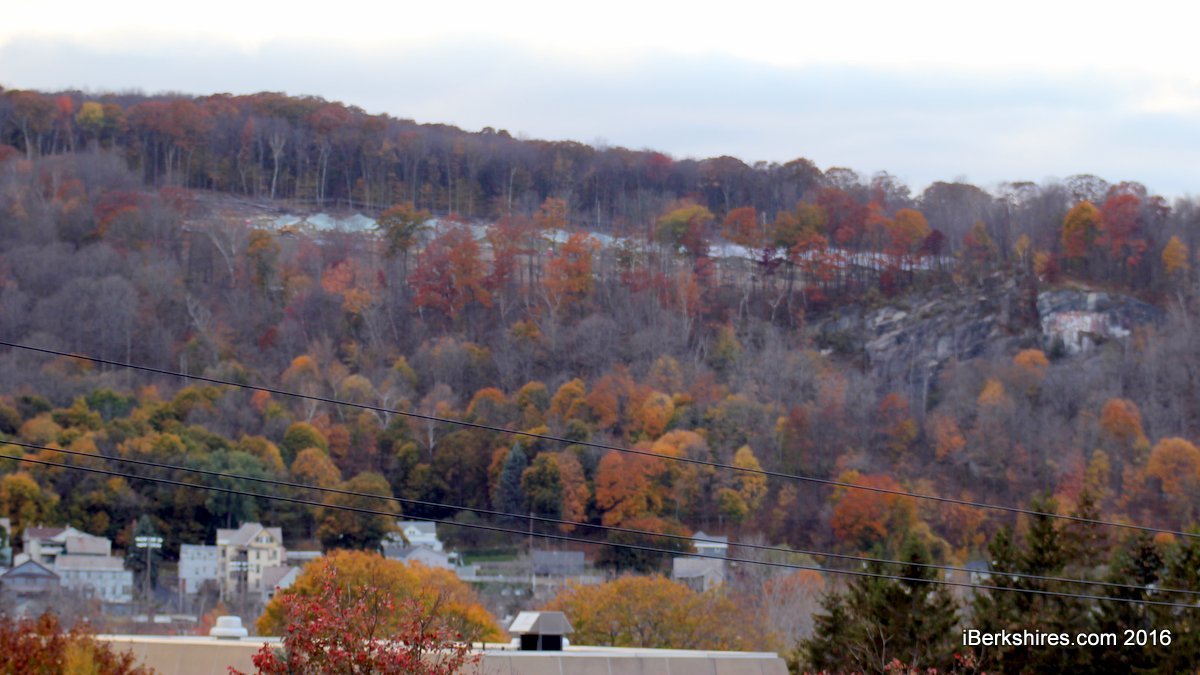
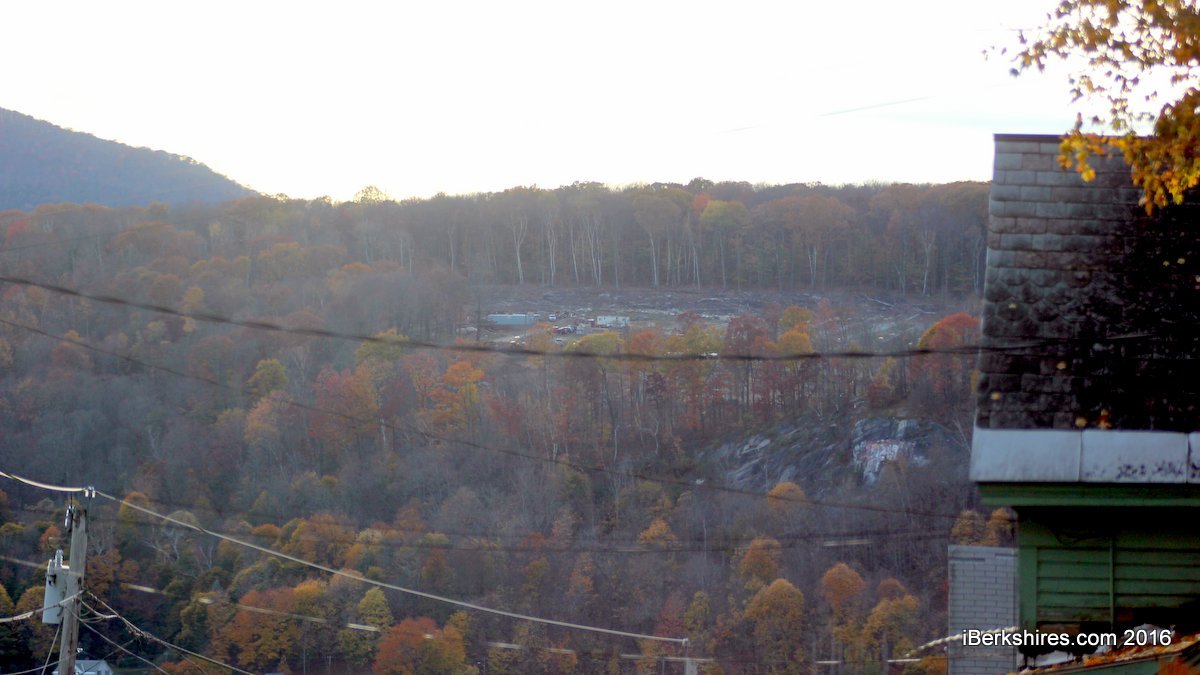
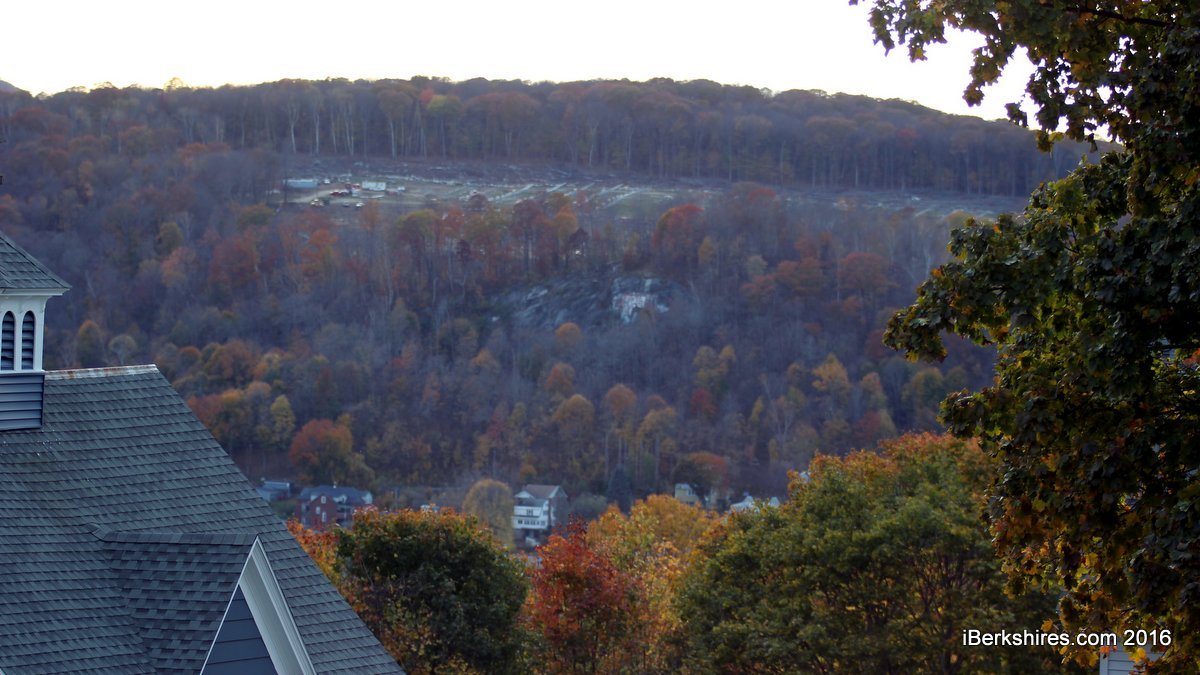
Mountaintop Solar Array Draws Complaints in North Adams
NORTH ADAMS, Mass. — A joint public hearing of the City Council and Planning Board on a proposed solar ordinance was highjacked Tuesday by complaints about a large commercial solar array already under construction.
Two arrays by the Clean Energy Collective totaling 1.32 megawatts are being constructed on either side of the high tension wires on Reservoir Road and Furnace and Witt streets. The work just above what's commonly known as Coca-Cola Ledge can be easily seen from the east side of the city.
"I came to see the mountaintop across from my house being cleared little by little and then more and more ... it seems to be an industrialization of our mountaintops," said Jack Savage of Yale Street. While supportive of solar energy, he objected to the misuse of the mountains, calling them a "vital resource" for the city.
The private array was approved last year by the Planning Board, and after the original proposal was sent back to the drawing board over water runoff issues.
Planning Board Chairman Michael Leary said the board was aware of the work and had already asked the developers to appear at the board's Nov. 14 meeting to answer the complaints. The board had been provided with graphics showing how visible the arrays might be from different locations.
"We wanted to see visually what would look like," he said. "Before we approved the project they had to submit drawings to show us what they felt it would like. ... They did and we were happy with those drawings."
He added that "it was clear they did not end up with what we were shown."
The work on the array is very obvious from points along Church Street near the college and higher elevations including East Quincy Street, particularly because the trees fronting it have lost most of their leaves.
"I don't know how something like that was allowed in the first place," said Savage, noting that he could see the clear-cut area from his car while driving near the college.
Resident Michael Chalifoux insisted solar was just a scam and the damage had already been done. "Where did government fail us?" he said.
Council President Benjamin Lamb also asked if there was any recourse or enforcement.
"Who is responsible and is there going to be any punishment, penalty?" echoed Councilor Robert M. Moulton Jr.
Administrative Officer Michael Canales and Leary believed that the city's building inspector could enforce the conditions of the special permit. But Canales said passing a solar ordinance was critical to ensure that rights and obligations were spelled out.
"With this ordinance, we're now giving the Planning Board the teeth and the tools to deal with people coming forward with solar instead of right now not having any ordinance ... to make it up as they go along," he said.
Currently the board can only require a site plan and that a project align with existing building codes and setbacks. The ordinance being discussed would give the city more control, such as over siting and requiring bonding for abandonment or eventual removal.
Canales said the proposed ordinance was not sparked by the Reservoir Road array but rather as part of the city's application for a Green Communities designation, which would open the way for certain grants. The city had planned to work with the Berkshire Regional Planning Commission but the departure of a BRPC staffer precluded that.
Instead, Canales, Building Inspector William Meranti and Assessor Ross Vivori sampled existing solar ordinances in other towns and a model ordinance created by the state.
The ordinance would have to allow some by-right siting for solar arrays, which is suggested for I-1 industrial zones, largely along the Curran Highway corridor. Other sites would be by special permit and Canales recommended prohibiting them in Rural Uplands (RU-1) specifically to protect the mountainsides.
Other recommendations are to limit the height of arrays, consider farmland for prohibition or that its use to be "strongly discouraged," and require any landscaping modifications as needed as conditions of approval to ensure visual aesthetics.
Canales noted that permission to clear-cut on the mountaintop did not fall under the Planning Board or city purview.
"Even with this ordinance there is nothing stopping a person who owns land in a rural uplands [zone] from putting in for a forest cutting plan and being approved at the state level to cut his land ... he has a right to do it," he said.
Councilor Lisa Blackmer had concerns about outright prohibition in RU-1 zones because they encompassed much of the city; Councilor Eric Buddington wanted a better definition of farmland to ensure it was properly protected.
The council voted to refer the ordinance back to the Planning Board for recommendations on height, siting, farmland and visuals.
Tags: ordinances, Planning Board, solar array,

